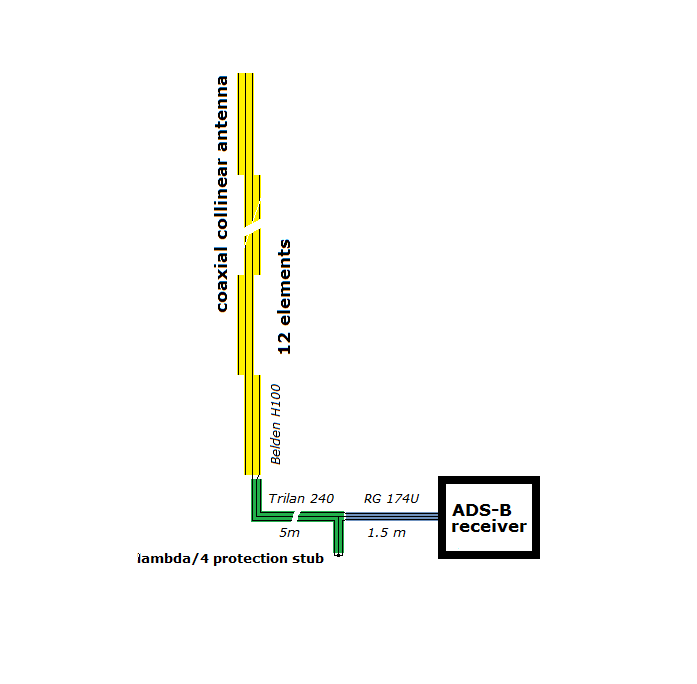
Comparison of the mismatched and pure 50 ohm coaxial collinear antennas for ADS-B receivers.
Dusan Balara
balarad@balarad.sk
Because of the ADS-B receivers input inpedance is usually 50 ohm I have build and tested two pure 50 ohm coaxial collinear antenna configurations and compared it with two similar mismatched coaxial collinear antenna configurations. ADS-B receiver used in these tests is Kinetic SBS 3.
The pure 50 ohm coaxial collinear antenna.
All used coaxial cables have impedance 50 ohm and pre-amplifier has also 50 ohm input and output impedance. I used cables with the low losses - Belden H 1000 with the losses 12 dB/100 m at 900 MHz for the 12 elements corpus of the coaxial collinear antenna and Trilan 240 with the losses 23 dB/100 m at 900 MHz. For the connection of the SMA connectors to these thick cables a thin cable RG 174U with the losses 92 dB/100 m was used, but only of the inevitable lengths.
The eigen corpus of the coaxial collinear antenna is built from Belden H 1000. The top end of it is open, other side is connected to the 5 m feeding line long Trilan 240 in case without pre-amplifier (Figure 23). The feeding line is terminated with the lambda/4 protection stub and last connection from the outside environment to the inside placed ADS-B receiver is made from 1.5 m long RD 174 U thin coaxial cable. The 24 hours red line polarogram of this configuration (measured on the same place as in chapter The Results of the Tests of the Coaxial Collinear Antenna for ADS-B Receiver) is in the Figure 27.

Figure 23 pure 50 ohm coaxial collinear antenna without pre-amplifier.
The second configuration is with the pre-amplifier which was placed on the mast and connected closely to the antenna. Short 0.1 m connections of the cable RG174U is used for the mounting of the SMA connectors between antenna and pre-amplifier as well as feeding line and pre-amplifier.
The pre-amplifier is HAB Supplies HABAmp 1090Mhz/ADS-B Filter & Preamp For Dongles with the gain 22.3dB at 1090Mhz and a Golledge 1090Mhz SAW filter which results an overall noise figure of 0.8dB. (The HABAmp is designed to amplify and filter the ADS-B signals to improve the reception via SDR. USB dongles although cheap tend to suffer from a lack of sensitivity and can be overloaded by strong local signals. This filter is designed to address these issues by amplifying the incoming signal and then passing it via a SAW filter to remove the out of band intermodulation that can cause reduced sensitivity to weaker signals on the band you're interested in.)
The test result is 24 hours yellow line polarogram on the Figure 27.
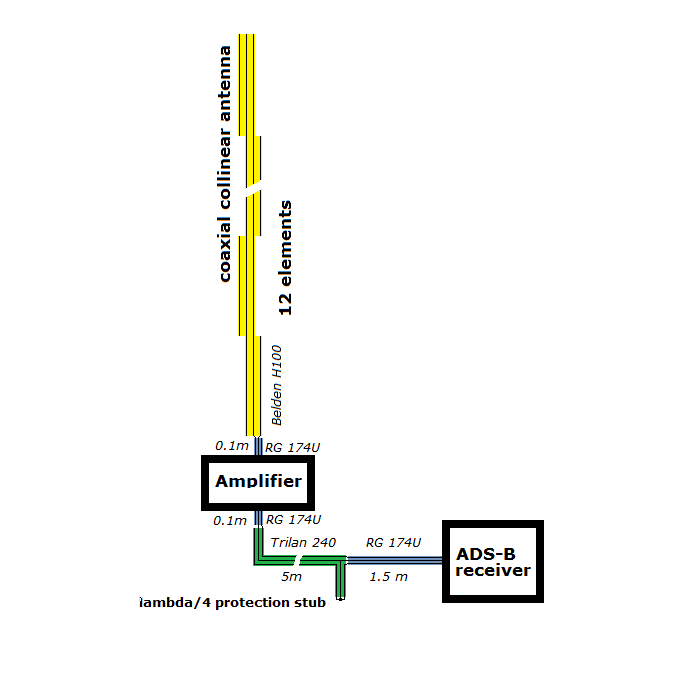
Figure 24 Pure 50 ohm coaxial collinear antenna with pre-amplifier.
The mismatched coaxial collinear antenna.
The eigen corpus of the mismatched coaxial collinear antenna is built from 75 ohm cable RG-6U/32FD and also feeding line. The top end of antenna is open. The feeding line is terminated with the lambda/4 protection stub and last connection from the outside environment to the inside placed ADS-B receiver is made from 50 ohm 1.5 m long RD 174 U thin coaxial cable.
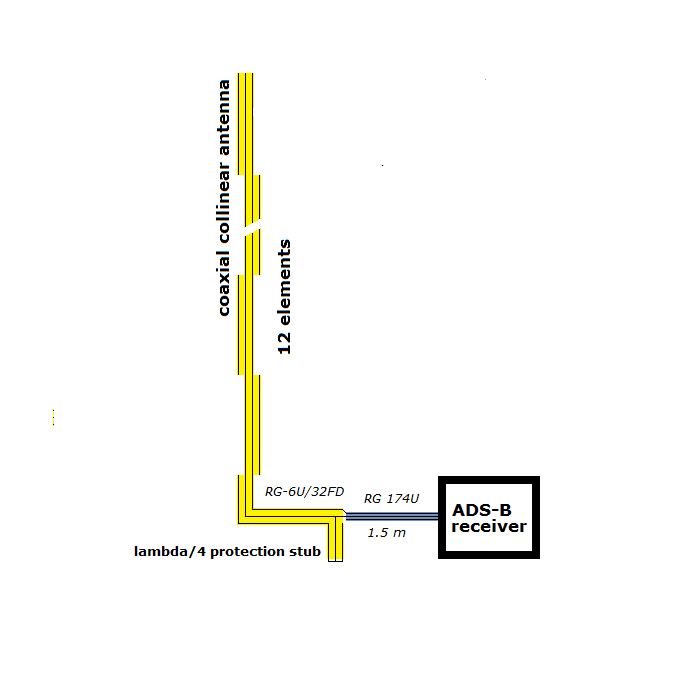
Figure 25 Mismatched coaxial collinear antenna without pre-amplifier.
The second configuration has the DVB-T pre-amplifier SCHWAIGER® SLV5060 with the gain 20 dB and bandwidth 950 - 2400 MHz, which is placed on the mast closely to the antenna.
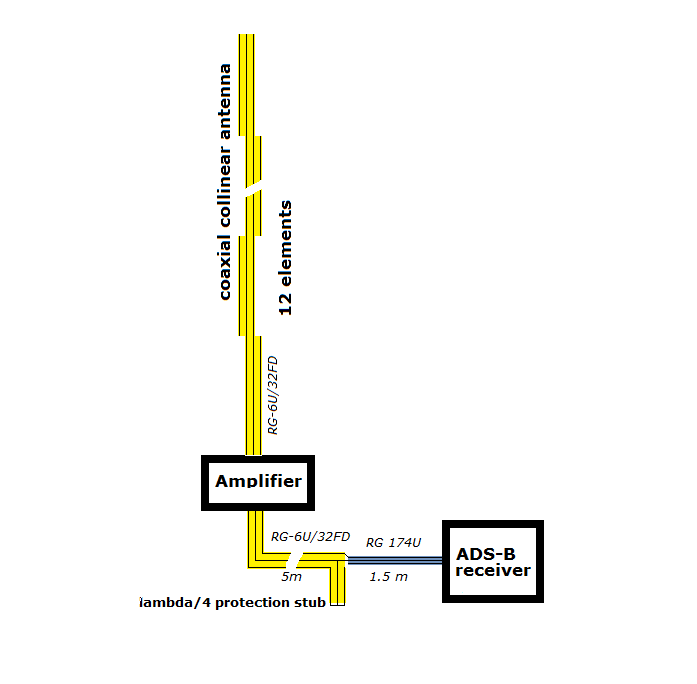
Figure 26 Mismatched coaxial collinear antenna with pre-amplifier.
The results of the tests.
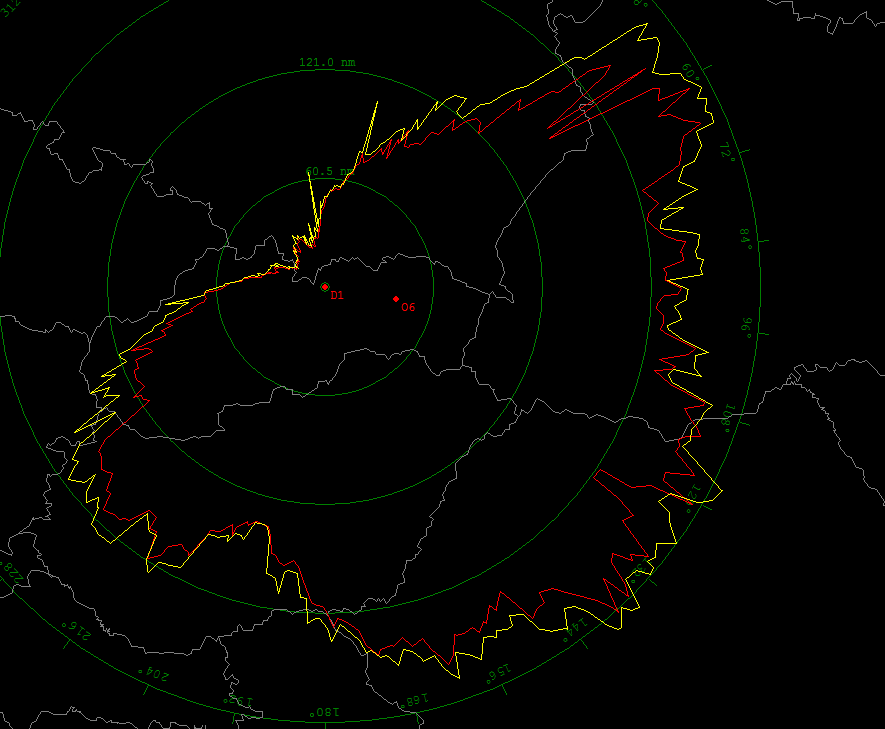
Figure 27 Polarograms of the pure 50 ohm coaxial collinear antenna with pre-amplifier (yellow line) and without pre-amplifier (red line).
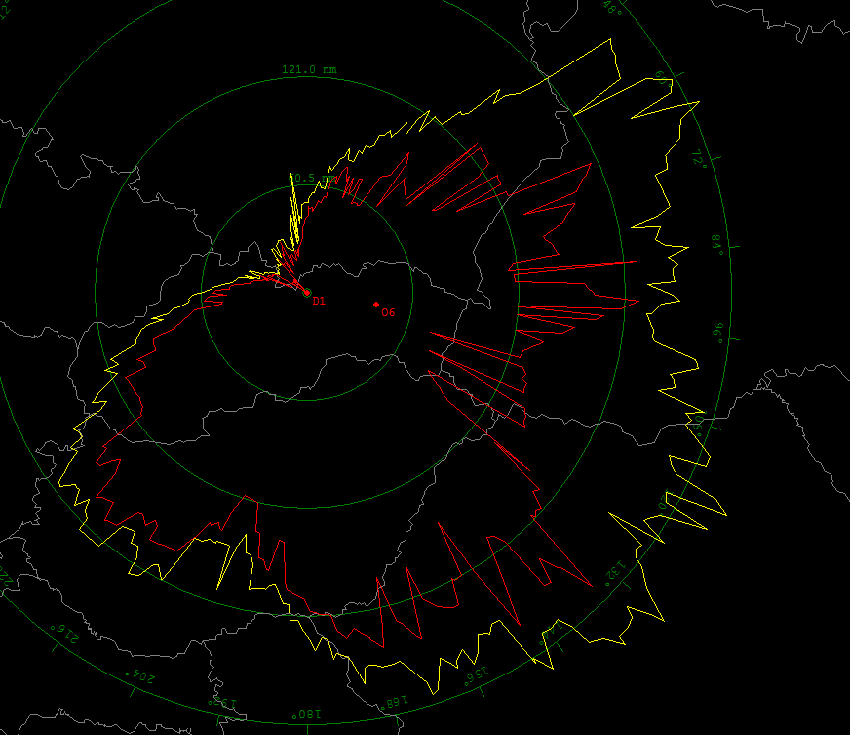
Figure 28 Polarograms of the mismatched coaxial collinear antenna with pre-amplifier (yellow lone) and without pre-amplifier (red line).
Conclusions.
1 - The difference between mismatched and pure 50 ohm antennas both without preamplifiers is notable visible.
2 - The coverage of the pure 50 ohm coaxial collinear antenna without pre-amplifier is similar to the coverage of the mismatched coaxial collinear antenna with the pre-amplifier.
3 - The first look at the polarograms indicates that there is not significant difference between mismatched and pure 50 ohm coaxial collinear antennas with the pre-amplifiers. It is caused probably by the fact that both coverages are on the range of the physical possibilities. But polarogram is only one indicator for the comparison. There are another indicators of the quality which can not be so easy readable as polarogram. They are mainly non interrupting of the connection with the airplanes, time necessary for the building of this polarogram and repeatability of the far-distant places coverage. These quality parameters certainly could be compared with the more sophisticated programs, but in this comparison only by the human observer subjective judgement. My monitoring of these parameters together with the obtained polarogram allow me to make conclusion that building of the pure 50 ohm coaxial collinear antenna and use of the specialized for ADS-B pre-amplifier with the 50 ohm input and output can bring the best coverage.
Related author's web sites:
Coaxial Collinear Antenna for ADS-B Receiver.
Related web sites:
Making an inexpensive 1090MHz ADS-B collinear antenna
Project 9: A coax collinear antenna for ADSB
Hak5 1606 – How To Build An ADS-B Antenna
Constructing an ADS-B Collinear Antenna